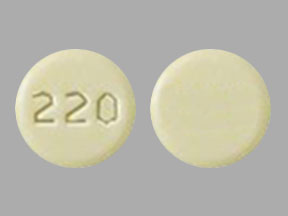Lyza Side Effects
Generic name: norethindrone
Medically reviewed by Drugs.com. Last updated on Mar 22, 2024.
Note: This document contains side effect information about norethindrone. Some dosage forms listed on this page may not apply to the brand name Lyza.
Applies to norethindrone: oral tablet.
Serious side effects of Lyza
Along with its needed effects, norethindrone (the active ingredient contained in Lyza) may cause some unwanted effects. Although not all of these side effects may occur, if they do occur they may need medical attention.
Check with your doctor immediately if any of the following side effects occur while taking norethindrone:
More common
- Frequent and irregular bleeding
- menstrual changes
Incidence not known
- Blindness
- blue-yellow color blindness
- blurred vision
- breast pain
- changes in menstrual period
- changes in vision
- chest tightness
- chills
- clay-colored stools
- confusion
- cough
- dark urine
- decreased vision
- diarrhea
- difficulty with swallowing
- discouragement
- dizziness
- double vision
- eye pain
- fast heartbeat
- feeling sad or empty
- fever
- general tiredness and weakness
- headache
- heavy non-menstrual vaginal bleeding
- hives, itching, or rash
- irritability
- lack of appetite
- light-colored stools
- light vaginal bleeding between regular menstrual periods
- loss of interest or pleasure
- migraine headache
- nausea and vomiting
- numbness of the hands
- pain, redness, or swelling in the arm or leg
- puffiness or swelling of the eyelids or around the eyes, face, lips, or tongue
- stomach pain
- swelling
- trouble concentrating
- trouble sleeping
- unpleasant breath odor
- unusual tiredness or weakness
- upper right abdominal or stomach pain
- vomiting of blood
- yellow eyes and skin
Other side effects of Lyza
Some side effects of norethindrone may occur that usually do not need medical attention. These side effects may go away during treatment as your body adjusts to the medicine. Also, your health care professional may be able to tell you about ways to prevent or reduce some of these side effects.
Check with your health care professional if any of the following side effects continue or are bothersome or if you have any questions about them:
More common
- Breast tenderness
- increased hair growth, especially on the face
- pimples
- weight gain
Incidence not known
- Brown, blotchy spots on exposed skin
- enlarged breasts
- loss or thinning of the hair
- mood swings
- nervousness
- weight changes
For Healthcare Professionals
Applies to norethindrone: compounding powder, oral tablet.
General
The most commonly reported side effects included cycle irregularity, spotting/breakthrough bleeding, and temporary amenorrhea.[Ref]
Genitourinary
Common (1% to 10%): Uterine/vaginal bleeding and spotting/breakthrough bleeding, short-lasting amenorrhea
Uncommon (0.1% to 1%): Breast discomfort
Frequency not reported: Irregular/increased/decreased bleeding/delayed menstruation, change in menstrual flow, menorrhagia, vaginal hemorrhage, cervical secretion alteration, cervical erosions, prolonged anovulation, suppressed lactation, galactorrhea, mastodynia, breast tenderness/enlargement, genital discharge, withdrawal bleeding (on treatment discontinuation), premenstrual-type depression, changes in cervical squamocolumnar junction and secretions[Ref]
Nervous system
Common (1% to 10%): Dizziness, headache
Frequency not reported: Drowsiness, somnolence, concentration loss, migraine, tremor, cerebral thrombosis and embolism[Ref]
Local
Common (1% to 10%): Injection site reaction, local skin reaction[Ref]
Gastrointestinal
Common (1% to 10%): Nausea
Uncommon (0.1% to 1%): Bloating
Frequency not reported: Vomiting, abdominal pain, gastrointestinal disturbance[Ref]
Dermatologic
Common (1% to 10%): Skin disorder
Frequency not reported: Angioedema, acne, hirsutism, alopecia, rash, pruritus, pruritic rash, melasma, chloasma, urticaria, exacerbation of existing skin conditions, sweating, allergic rash with and without pruritus[Ref]
Metabolic
Common (1% to 10%): Increased weight
Frequency not reported: Increased fasting insulin levels, Cushing's syndrome, decreased glucose tolerance, exacerbation of diabetes mellitus, glycosuria, weight gain/change, change in appetite, fluid retention, increased serum calcium and potassium levels, altered serum lipid and lipoprotein levels (e.g., decreased HDL, increased LDL/HDL ratio)[Ref]
Hypersensitivity
Common (1% to 10%): Hypersensitivity reaction
Frequency not reported: Anaphylaxis/anaphylactoid reactions[Ref]
Psychiatric
Uncommon (0.1% to 1%): Depressed mood/depression/clinical depression/metal depression
Frequency not reported: Insomnia, nervousness, libido change, mood swings[Ref]
Respiratory
Frequency not reported: Urge to cough, paroxysmal cough, respiratory distress, dyspnea, pulmonary embolism, voice deepening[Ref]
Ocular
Frequency not reported: Retinal thrombosis, diabetic cataract, vision disorders, visual disturbance, contact lens intolerance, optic neuritis (may lead to partial or complete vision loss)[Ref]
Cardiovascular
Frequency not reported: Circulatory irregularity, thromboembolic disorders, thrombophlebitis, increased blood pressure/hypertension, edema[Ref]
Hepatic
Frequency not reported: Cholestatic liver changes/cholestatic jaundice, hepatitis, disturbed liver function, transient liver test abnormalities (e.g., AST, ALT, bilirubin)[Ref]
Other
Frequency not reported: Fever, hyperpyrexia, fatigue, extremity pain[Ref]
Hematologic
Frequency not reported: Increased white cell and platelet counts[Ref]
Endocrine
Frequency not reported: Masculinization of the female fetus[Ref]
More about Lyza (norethindrone)
- Check interactions
- Compare alternatives
- Reviews (94)
- Drug images
- Dosage information
- During pregnancy
- Drug class: contraceptives
- Breastfeeding
- En español
Patient resources
Other brands
Aygestin, Camila, Errin, Heather, ... +11 more
Professional resources
Other brands
Aygestin, Camila, Errin, Heather, ... +12 more
Related treatment guides
References
1. Product Information. Micronor (norethindrone). Ortho McNeil Pharmaceutical. 2001;PROD.
2. Product Information. Nor-QD (norethindrone). Watson Laboratories Inc. 2001;PROD.
3. Product Information. Aygestin (norethindrone). Lederle Laboratories. 2001;PROD.
4. Cerner Multum, Inc. UK Summary of Product Characteristics.
5. Cerner Multum, Inc. Australian Product Information.
Further information
Always consult your healthcare provider to ensure the information displayed on this page applies to your personal circumstances.
Some side effects may not be reported. You may report them to the FDA.

